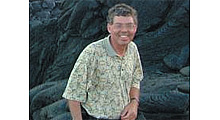
Doug Lung
The Middle Class Tax Relief and Job Creation Act of 2012 (the same law that allowed incentive auction of TV spectrum) required the General Accounting Office to conduct a study of spectrum efficiency, with a focus on receiver performance as it relates to increasing the effective use of spectrum.
Readers familiar with the battle between GPS manufacturers and users and LightSquared and the interference issues between the Satellite Digital Audio Radio Service and adjacent AWS allocations will find little new in the GAO study, Spectrum Management: Further Considerations of Options to Improve Receiver Performance Needed.
For those not up on the latest interference/spectrum issues, the study provides a good overview with graphs explaining the difference between out-of-band emissions from transmitters and lack of filtering in receivers.
The efforts of ATSC to set voluntary receiver performance standards are mentioned, but the study found that there is little incentive for receiver manufacturers improve receiver performance to reduce adjacent band interference. Such improvements are likely to lead to increased cost, increased size and increased power consumption.
The study lists some of the options identified by stakeholders and reports to improve receive performance. The National Association of Broadcasters was one of the stakeholders interviewed for the study. Advantages and disadvantages of options such as “Greater use of industry-developed standards;” “Interference limits;” “Additional information on spectrum use;” and “Research and development” are covered.
Unfortunately all of these options have significant disadvantages. For example, the study notes that establishing allowed interference levels (similar to FCC standards on interference to TV reception such as OET-69) would lead to some lower-performing receivers not being entitled to protection, which, it notes, “could be difficult in the case of widely deployed consumer devices.” However, it say mandated performance standards set by the FCC or NTIA could potential slow innovation and raise questions about the FCC's authority to broadly regulate receivers.
In its conclusion, the study says, “many stakeholders feel that more can and should be done to improve receiver performance in concert with other efforts to increase spectrum efficiency—the status quo is increasingly becoming untenable. Stakeholders have identified and studied several options to improve receiver performance and the efficient use of spectrum. In some instances, these options entail direct federal intervention, such as imposing mandatory standards for receivers, whereas in others, federal policy creates an environment where industry participants’ individual and collective actions can improve receiver performance. Each of these options entails advantages, including reduced actual and potential interference and improved spectrum efficiency, and disadvantages, including possibly higher equipment costs.”
The GAO made the following recommendation for “Executive Action:”
“To improve receiver performance and spectrum efficiency, we recommend that the Chairman of the Federal Communications Commission consider collecting information on the practical effects of various options to improve receiver performance, including consideration of small-scale pilot tests of these options.”
The professional video industry's #1 source for news, trends and product and tech information. Sign up below.

Doug Lung is one of America's foremost authorities on broadcast RF technology. As vice president of Broadcast Technology for NBCUniversal Local, H. Douglas Lung leads NBC and Telemundo-owned stations’ RF and transmission affairs, including microwave, radars, satellite uplinks, and FCC technical filings. Beginning his career in 1976 at KSCI in Los Angeles, Lung has nearly 50 years of experience in broadcast television engineering. Beginning in 1985, he led the engineering department for what was to become the Telemundo network and station group, assisting in the design, construction and installation of the company’s broadcast and cable facilities. Other projects include work on the launch of Hawaii’s first UHF TV station, the rollout and testing of the ATSC mobile-handheld standard, and software development related to the incentive auction TV spectrum repack. A longtime columnist for TV Technology, Doug is also a regular contributor to IEEE Broadcast Technology. He is the recipient of the 2023 NAB Television Engineering Award. He also received a Tech Leadership Award from TV Tech publisher Future plc in 2021 and is a member of the IEEE Broadcast Technology Society and the Society of Broadcast Engineers.
